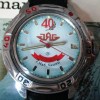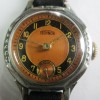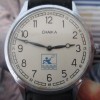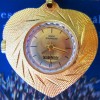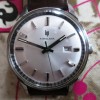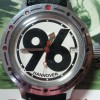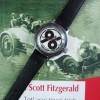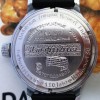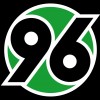unique: Komandirskie Amfibia Hannover 96 watch, automatic 2416 B with 31 rubies, engraved by the famous footballer Robert Enke. Museum piece !
This Komandirskie Amfibia Hannover 96 watch, a 200-meter diver (back cover marker), is a hybrid between two highly regarded models of the Tschistopol manufacturer, the Komandirskie and Amphibia models. It is equipped with a 2416 B mechanism with 31 rubies, central secondary and calendar and made in 1996, a special limited edition dedicated to the 100th anniversary of the establishment of the Hannover 96 football club. The clock has a diameter of 43 mm, the total thickness 15 mm and the distance between the 18 mm grooves and the mechanism is 24 mm in diameter and 5.5 mm in height. The Soviet-style Aera anti-shock derailleur delivers 19,800 alternations per hour, and the engine arc provides a fully charged 40-hour reserve. This mechanism has an interesting feature: the reinforcement is made by means of two additional wheels (photo 6, yellow and red arrows) fixed by a sort of micro-regulator, actually two elastic blades attached at one end to the wheel deck (photo 6, blue arrow ). The massive, bi-directional housing is chrome-plated. The reamer is adjustable to protect against water. The back cover, with the original seal, is on the thread, engraved with the "Amphibia" in Cyrillic letters. The white dial is dominated by the German football team's logo in Budesliga, Hannover 96. But what makes this really special clock is the inscription engraved on the back: "Unserem Freund Robert Enke, August 24, 2006, Geburtstag und 110 Jahre Hannover 96 ". Free translation: "Our friend Robert Enke, August 24, 2006, his anniversary and 110 years since the foundation of Hannover 96".
This watch is a true piece of the museum, according to the inscription he belonged to, or was given, to Robert Enke, one of the most titrated German football players. He played for Benfica Lisbon and FC Barcelona, but the most beautiful part of his career took place in his soul team, Hannover 96.
Enke was born on 27 August 1977 at Jena. He began to play small football, initially as a forward but then made the switch to the goalkeeper, post in which he showed a clear talent. He joined Carl Zeiss Jena in 1985, club with which he signed his first professional contract at only 17 years. Coincidence or ba, his professional debut took place on November 11, 1995 against... Hannover 96. His move then passed to Borussia Moenchengladbach, where he was given the chance to defend after the injury of goalkeeper Uwe Kamps. In 1999 he went to Benfica in Lisbon, where his performances earned the admiration of fans. After the Portuguese period, Enke accepts FC Barcelona's offer in 2002. This was the most difficult period of his career, but in 2004 he returned to the Bundesliga in Hannover 96 as the title keeper, even being a team captain. Overall, Robert Enke played 180 times for Hannover 96. He was very fond of both his colleagues from the various clubs where he played, as well as supporters. On November 10, 2009, goalkeeper Hannover 96, one of Germany's best footballers, Robert Enke, committed suicide in front of an express train in Eilvese, Neustadt am Rübenberge. His wife, Teresa Reim, revealed that Robert suffered from depression. After the death of their daughter, Lara, in 2006, Robert Enke struggles to cope with the loss every day. After his death, tens of thousands of fans went to the stadium to lay flowers and light candles. The club where he played before, FC Barcelona, held a moment of silence before the match that evening and in a few international matches. As a token of respect, Germany's national team canceled the match with Chile. His funeral was attended by over 40,000 fans.
The Hannoverscher Sportverein von 1896 eV, whose common name is Hannover 96, called Die Roten (Red Roses), was founded on April 12, 1896, at the suggestion of Ferdinand Wilhelm Fricke, based in Hannover, Lower Saxony. The colors of the club are black, white and green. The team currently plays in the first German league, the Bundesliga, one of the most powerful championships in the world. The first sports practiced were athletics and rugby, the interest in football emerged in 1899. The first national championship won him in 1938, defeating Schalke 04 in a historic match. Since then, on a journey of ups and downs, the team has steadily progressed, making their way to the Bundesliga. The home stadium of the famous German team is the HDI-Arena, built in 1954, with a capacity of 49,000 spectators. The club's headquarters are now in Hanover, Robert Enke Street.
All the data fit, and the engraving is as authentic as it is executed manually, in German. Perhaps the watch was a gift offered by the club, colleagues or friends on the occasion of the twin anniversary: Enke's 29th anniversary, August 24, 2006, and the 110th anniversary of the club's 12th April 1896 Hannover 96. In just three years, just 32 years old, Robert Enke was about to die. All the above details make the clock have an invaluable value, being a true piece of museum !
The Komandirskie model entered production in 1940 and was originally intended only for Red Army officers. War heroes were also rewarded with distinctive clocks. The Amphibia model entered production in 1958 and was originally intended for Soviet sailors. The melange between Amphibia and Komandirskie led to a watch that sums up all the qualities of both models: the robustness of Komandirskie and the water resistance of the Amphibian. The Wostok watch factory originates in the war year 1941, when the Clock Factory no. 2 from Moscow in Tschistopol Glavpribor, on the Kama River. Here, at the NK MV 835 unit, military equipment was produced, as well as clocks for tanks and planes. After the end of the war and the return of Factory no. 2 in Moscow (later became "Slava"), production capacities remained in Tschistopol where watches were made for soldiers, as well as watches for the civil market. Since 1942, the Tschistopol Clock Factory (Tschistopol Ciasovaia Zavod) has been named. In 1964 the name Wostok was established (only in 1995 it was changed to "Vostok"). At first the K-43 and K-26 were used for Pobeda watches. In 1952, Kama watches are made in a shock-proof housing. In 1992 the factory passed into the jurisdiction of the Republic of Tatarstan and Vostok watches were exported to Italy, USA, Switzerland, etc.
The clock comes from the personal collection, looks absolutely impeccable and works well. It comes with the presentation strap and the transport falls on the buyer. For this watch you can choose a beautiful genuine ostrich belt, snake or calf leather (find your watch straps under "leather straps"). Other clock accessories are found in the "pillow" and "box" sections.
Caution: keep the watch out of blows or strong mechanical shocks. Although it has a solid swing mechanism on the rocker, it's just a watch! Keep your watch and wet, acidic atmospheres. Even if it has sealing gaskets, they are weakening over time. Avoid getting close to intense (electro) magnetic fields. The spiral of the swing is sensitive, and can remain with a weak magnetism that disrupts its operation. Periodically, at 4-5 years, it's good to do a new revision to the watchmaker. Even the best oil degrades during a long mechanical operation.
Vrei sa il cumperi? Contacteaza vanzatorul:
Ceasornicar
